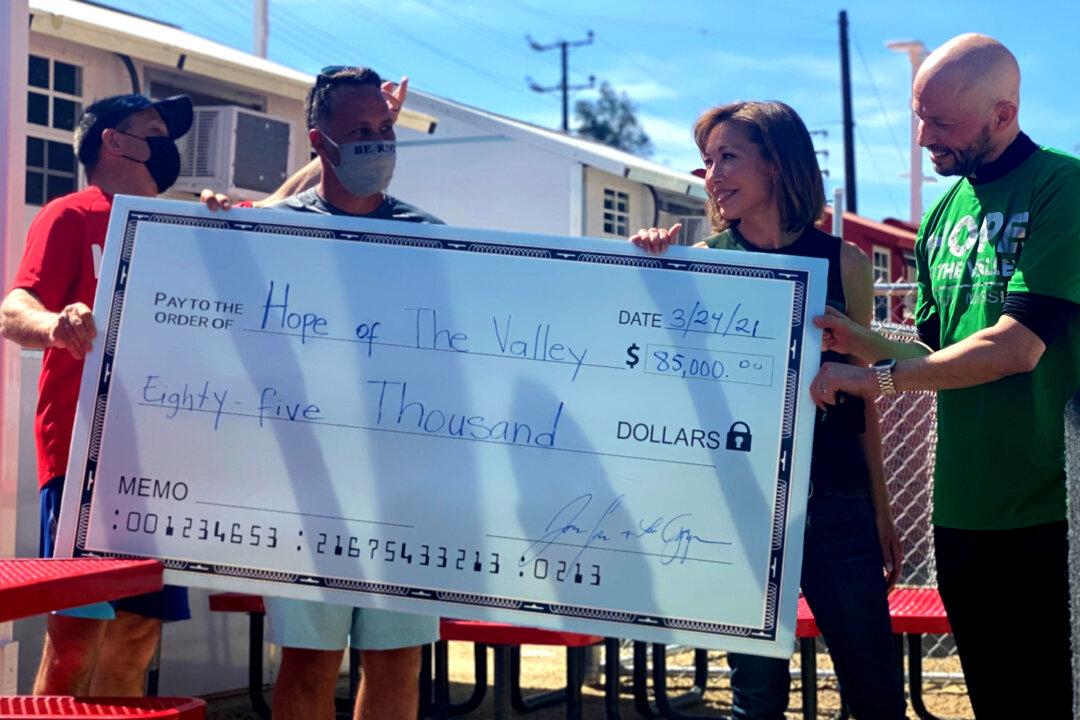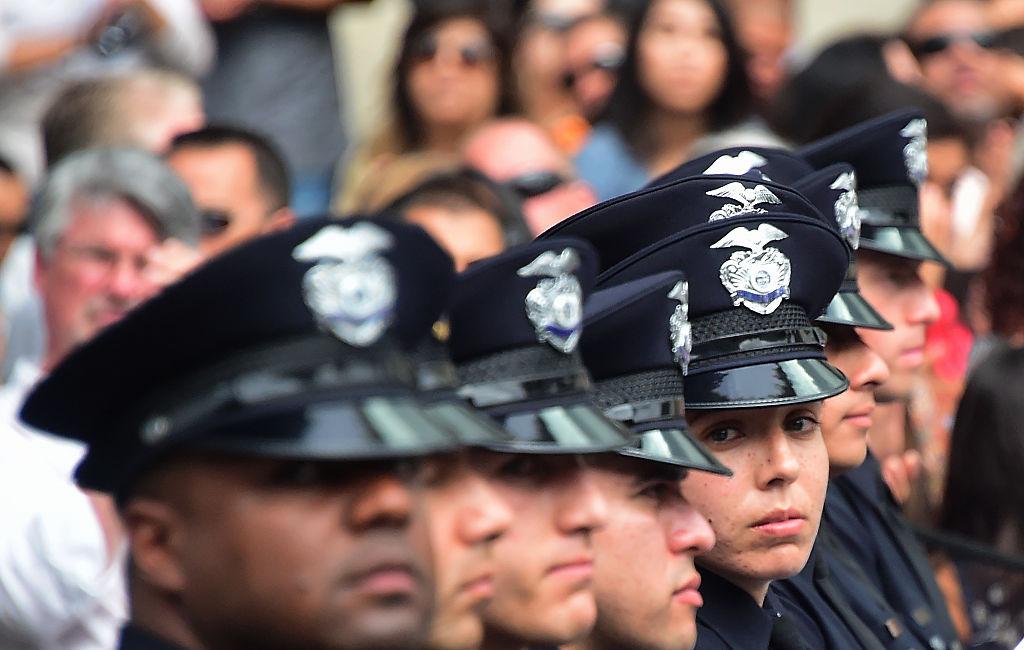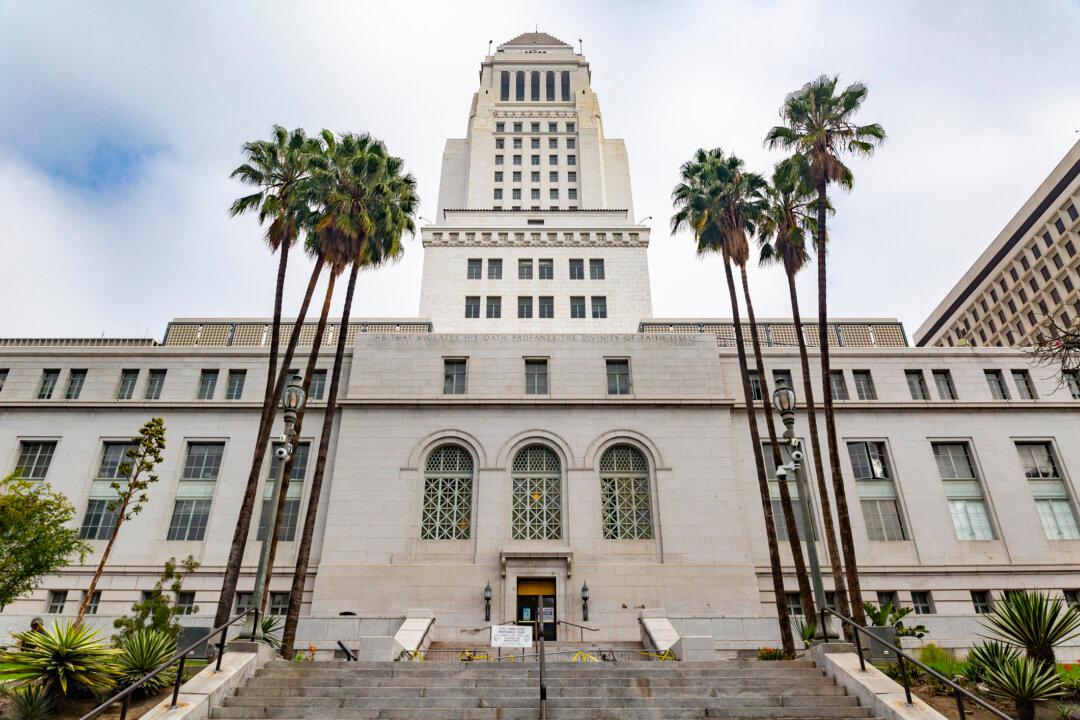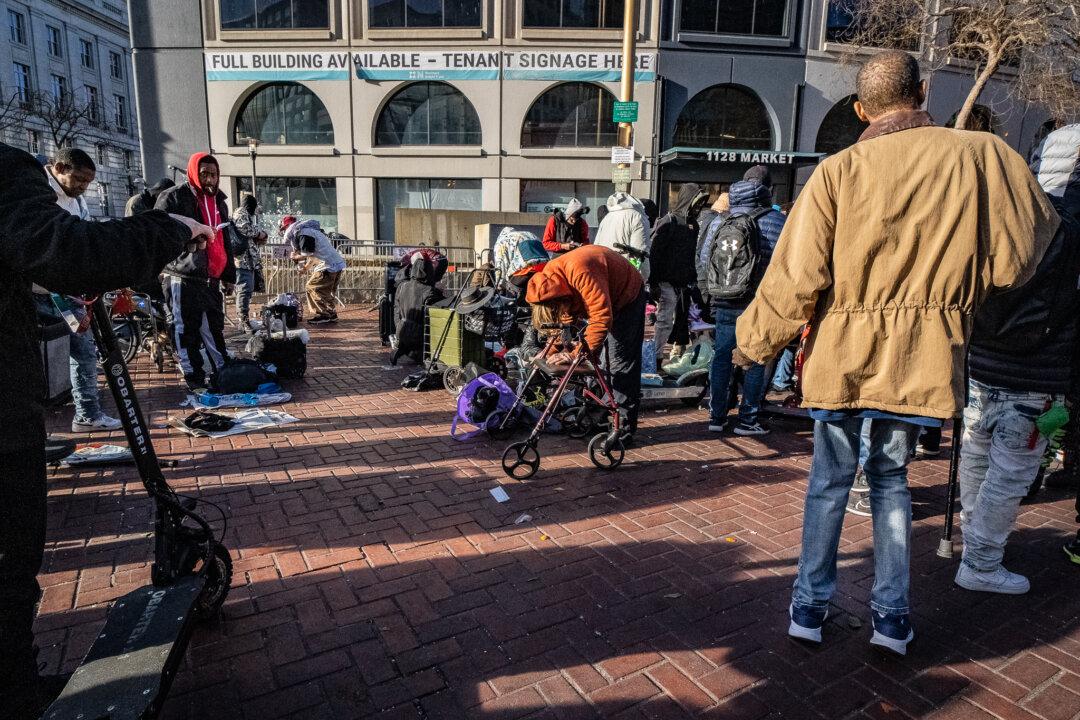LOS ANGELES—As a local nonprofit prepares to open the largest tiny home community in California designed to provide temporary housing for the homeless in Los Angeles’ San Fernando Valley, celebrities and officials gathered to celebrate the event and promote fundraising efforts.
Actor Jon Cryer and his wife, local entertainment reporter Lisa Joyner, said they wanted to do something to address the growing homeless population in Los Angeles. After extensive research, the couple donated $85,000 to Hope of the Valley for the creation of its latest Tiny Home Village in Alexandria Park.





